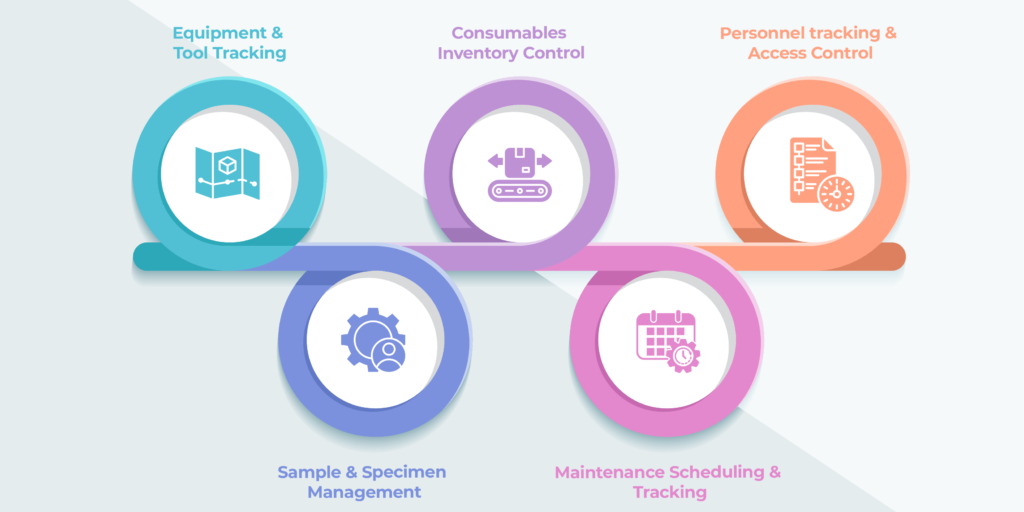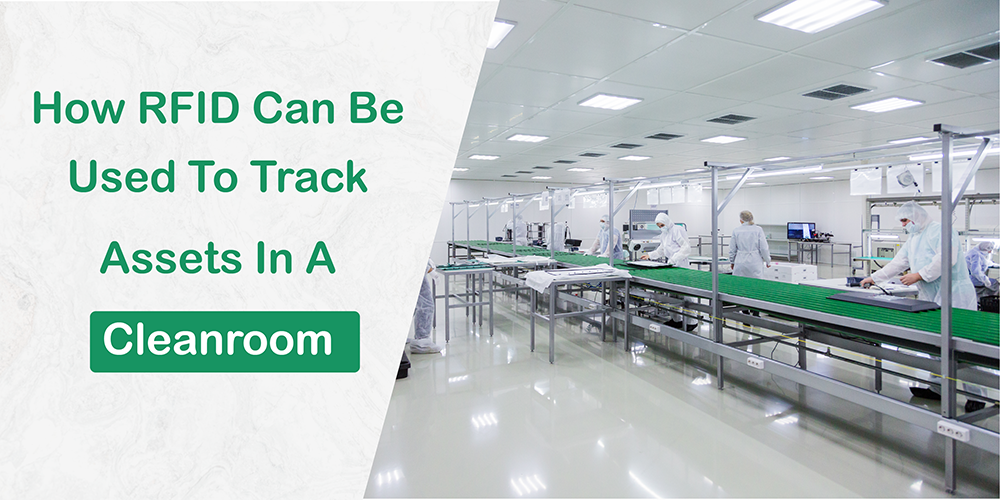Introduction
In the world of precision manufacturing and scientific research, cleanrooms play a crucial role in maintaining sterile environments. These controlled spaces are essential for industries where even the smallest contaminant can have significant consequences. However, managing assets within these sensitive areas presents unique challenges. This is where Radio Frequency Identification (RFID) technology steps in, offering a revolutionary approach to asset tracking in cleanrooms.
Challenges of Asset Tracking in Cleanrooms
Cleanrooms face several obstacles when it comes to tracking assets. Strict contamination control requirements limit the use of traditional tracking methods like barcode labels or paper- based systems, which can introduce particles or fibers into the environment. Additionally, the need for non-invasive, accurate tracking is paramount to maintain the cleanroom’s integrity while ensuring efficient operations.
Benefits of RFID for Cleanroom Asset Tracking
RFID technology offers numerous advantages for cleanroom asset tracking. Its non-contact identification capability allows for seamless tracking without compromising the sterile environment. RFID systems provide high accuracy and reliability, ensuring that assets are always accounted for Real-time tracking capabilities enable instant location and status updates of equipment and materials. This leads to improved inventory management, reducing the risk of stockouts or overstocking. Furthermore, RFID enhances regulatory compliance by providing detailed audit trails and documentation of asset movements and usage.
RFID Technology Suitable for Cleanrooms:
A. Specialized cleanroom-compatible RFID tags
RFID tags used in cleanrooms must be designed to withstand the harsh conditions and strict requirements of these environments. Some examples of RFID tags suitable for cleanrooms include:
- TagMatiks Autoclave-resistant tags that can withstand high temperatures, pressure, and steam exposure during sterilization.
- TagMatiks Chemical-resistant tags that can endure frequent cleaning with disinfectants and harsh chemicals.
- TagMatiks Laundry RFID Tags are designed to withstand repeated washing and drying cycles, making them ideal for tracking cleanroom garments and linens that require frequent laundering.
B. Low-emission RFID readers:
These are RFID readers designed to minimize electromagnetic emissions, which is crucial in cleanroom environments where sensitive equipment might be affected by electromagnetic interference. They operate at lower power levels while still maintaining effective read ranges.
C. Integrated software solutions:
This refers to software platforms that work in conjunction with RFID hardware to manage and analyze data. TagMatiks AT Lite RFID software is an example of such a solution. It’s designed for asset tracking and offers features like:
- Real-time asset visibility
- Customizable reporting
- Integration with existing systems
- User-friendly interface for easy asset management
Key Applications of RFID in Cleanroom Asset Management

A. Equipment and tool tracking
RFID enables real-time tracking of critical equipment and tools used in cleanrooms, ensuring their availability and proper location. This helps reduce search time, prevent misplacement, and maintain accurate inventory records.
B. Consumables inventory control
RFID can be used to monitor the usage and stock levels of consumables such as gloves, wipes, and sterile packaging. This helps maintain adequate supplies, optimize inventory management, and ensure that critical materials are always available when needed.
C. Personnel tracking and access control
RFID-enabled badges can monitor who enters and exits the cleanroom, ensuring only authorized personnel have access.
D. Sample and specimen management
RFID tags can be used to track and manage samples and specimens, reducing the risk of mix-ups and ensuring proper handling.
E. Maintenance scheduling and tracking
RFID-based systems can automatically trigger maintenance alerts when equipment is due for service or calibration. This helps ensure that critical assets are properly maintained, reducing downtime and ensuring compliance with regulatory requirements.
Industries that Can Use RFID Asset Tracking for Cleanrooms
A. Pharmaceutical manufacturing
Cleanrooms are essential in pharmaceutical manufacturing for producing sterile drugs, vaccines, and other medical products. RFID asset tracking helps maintain strict quality control and compliance with Good Manufacturing Practices (GMP).
B. Aerospace and defense
The aerospace and defense industries rely on cleanrooms for the production of sensitive electronic components, advanced materials, and precision parts. RFID asset tracking ensures that critical assets are properly managed and maintained.
C. Medical device manufacturing
Cleanrooms are necessary for the production of sterile medical devices, such as implants, surgical instruments, and diagnostic equipment. RFID asset tracking helps maintain product quality, traceability, and compliance with regulatory standards.
D. Biotechnology research facilities
Cleanrooms are used in biotechnology research for experiments involving cell cultures, genetic engineering, and other sensitive biological processes. RFID asset tracking helps manage critical equipment, samples, and specimens in these environments.
E. Food processing plants
Cleanrooms are employed in food processing plants for the production of sterile, high-quality food products. RFID asset tracking helps maintain cleanliness, prevent cross-contamination, and ensure compliance with food safety regulations.
Conclusion
RFID technology offers a powerful solution for asset tracking in cleanroom environments. By overcoming the challenges of traditional tracking methods and providing numerous benefits, RFID is revolutionizing how industries manage their cleanroom assets. From specialized tags to integrated software solutions, RFID systems are tailored to meet the unique demands of sterile environments. As industries continue to prioritize precision, efficiency, and compliance, RFID asset tracking in cleanrooms is becoming an indispensable tool for maintaining the highest standards of operation in these critical spaces.
